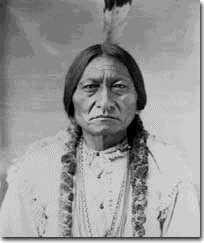It’s ironic, Native American cigar box labels are some of the most beautiful, colorful and detailed images ever created in advertising.  They are definitely highly collectible. However, I have come to the conclusion that the cigar industry exploited the native Americans. Being that I have some Choctaw blood, I was dismayed to learn how cigar labels helped to stereotype the American Indian.
They are definitely highly collectible. However, I have come to the conclusion that the cigar industry exploited the native Americans. Being that I have some Choctaw blood, I was dismayed to learn how cigar labels helped to stereotype the American Indian.
 Images of Native Americans have always been connected with the sale of tobacco. This connection can be traced back to when the American Indians introduced the “Native Plant” to the Europeans. For the Native American, tobacco had great supernatural power, and smoking was an intimate part of ceremony. Furthermore, nothing could better exemplify the symbolic nature of the Native American peace pipe with its association to smoking.
Images of Native Americans have always been connected with the sale of tobacco. This connection can be traced back to when the American Indians introduced the “Native Plant” to the Europeans. For the Native American, tobacco had great supernatural power, and smoking was an intimate part of ceremony. Furthermore, nothing could better exemplify the symbolic nature of the Native American peace pipe with its association to smoking.
America dramatized its conflict with the Plains Indians in popular culture back as early as 1885, when Chief Sitting Bull agreed to join Buffalo Bill’s Wild West Show. He probably didn’t realize he was about to make a major contribution to the stereotyping of the American Indian and the romanticizing of the American West. Sitting Bull became a major attraction, as thousands of spectators turned out to catch a glimpse of the infamous “White Man” killer. Native Americans who performed with the show included Geronimo, Chief Joseph, and Rains In The Face – who reportedly was the Indian who had actually killed General Custer at Little Bighorn. The show featured as many as 1200 performers and hundreds of large animals, including a large herd of buffalo. With the closing of the American frontier in the late Nineteenth Century and the success of the Wild West Show, Euro-Americans quickly came to see the Native American, especially the Plains Indian, in legendary terms, and as a culture in America’s past.
As soon as the Native American became a non-threat, the “Noble Savage” appeared as a stereotype. Wooden Indians were displayed outside tobacconist shops to attract the attention of customers. Cigar makers used famous chiefs and Indian squaws to their advantage. The Indian Squaw became the “princess,” while the male often became the noble, picturesque warrior: clean, stoic, and dressed in feathers. By connecting the Indian with such products as tobacco and medicine, the consumer endorsed the stereotype of a primitive culture, and cemented the image of the Indian as part of America’s past in the minds of Americans.
Unfortunately, the reposed American Indian was a boom to cigar advertising. Their lithographed images were mass produced in the last half of the 19th Century and became an important symbol of America’s so called “progress”. Native Americans were widely displayed on cigar boxes and trading cards, and were collected by many Americans because of their often lush, colorful graphics. American Indians, along with other minorities such as; Blacks, and Asians were all marginalized in cigar label advertising in order to foster this sense of White American identity.







